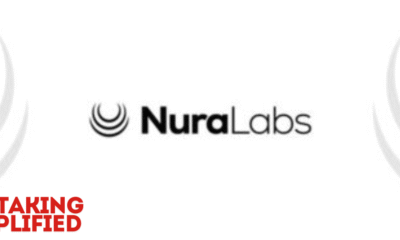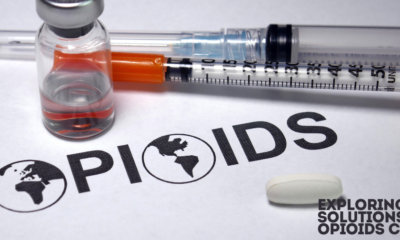Public Health
Understanding Biostatistics: A Crucial Tool in Public Health

Biostatistics, a term derived from “biology” and “statistics,” is a scientific discipline that applies statistical methods and reasoning to analyze biological data. This field is pivotal in advancing medical research, public health, and clinical medicine. Integrating statistical principles with biological sciences enables researchers and health professionals to draw meaningful conclusions from complex datasets, providing insights critical to public health interventions, policy-making, and medical practices.
Biostatistics is indispensable in public health. It allows for the systematic and rigorous analysis of data, which is essential for understanding health trends, evaluating the effectiveness of interventions, and making informed decisions. This article delves into bio-statistics, its historical development, core concepts, and its vital role in public health.
What is Biostatistics?
Biostatistics is the application of statistical techniques to collect, analyze, and interpret data in biological and health sciences. It encompasses various activities, including designing biological experiments, analyzing data from those experiments, and making inferences about the biological processes or populations being studied. The field is inherently interdisciplinary, drawing from statistics, biology, epidemiology, and public health, among other areas.
Biostatisticians use statistical methods to answer questions related to human health and disease. These methods include descriptive statistics, inferential statistics, probability theory, regression analysis, and more advanced survival and longitudinal data analysis techniques. Biostatisticians’ work often involves designing studies, selecting appropriate data collection methods, analyzing data, and interpreting the results to draw valid and reliable conclusions.
Historical Development of Biostatistics
The roots of biostatistics can be traced back to the early 19th century, although the field has evolved significantly since then. The history of biostatistics is intertwined with the development of statistics and the rise of public health as a distinct discipline.
One of the earliest pioneers in the field was John Graunt, an English statistician, who in 1662 published a work titled “Natural and Political Observations Made upon the Bills of Mortality.” Graunt’s work involved analyzing mortality records in London, and it is considered one of the first efforts to use statistical methods to understand population health. His analysis provided insights into mortality and disease patterns in the population, laying the groundwork for future public health statistics.
In the 19th century, Florence Nightingale, widely regarded as the founder of modern nursing, made significant contributions to biostatistics. Nightingale was a nurse and statistician who used statistical analysis to demonstrate the impact of sanitary conditions on health outcomes. Her work during the Crimean War, where she used statistical graphs to illustrate the mortality rates among soldiers, is a landmark in applying statistics to public health.
The formal establishment of biostatistics as a distinct discipline occurred in the early 20th century with the work of Ronald A. Fisher and Karl Pearson. Fisher, often referred to as the father of modern statistics, developed many statistical methods still in use today, including analysis of variance (ANOVA) and maximum likelihood estimation. On the other hand, Pearson developed the chi-squared test and significantly contributed to the correlation and regression theory.
Over the decades, biostatistics has grown in importance, particularly with the advent of advanced computing technology, which has allowed for the analysis of large and complex datasets. Today, biostatistics is a fundamental component of public health research, clinical trials, epidemiology, and health policy analysis.
Core Concepts in Biostatistics
Understanding its core concepts and methodologies is essential to fully grasp biostatistics’s importance in public health. These concepts form the foundation of biostatistical analysis and are used extensively in studying health and disease.
Descriptive Statistics: This involves summarizing and describing the features of a dataset. Descriptive statistics provide simple summaries about the sample and the measures, including measures of central tendency (mean, median, mode) and measures of variability (range, variance, standard deviation). In public health, descriptive statistics are often used to summarize demographic information, health behaviors, and disease prevalence.
Inferential Statistics: Inferential statistics allow researchers to make inferences about a population based on a sample. This includes hypothesis testing, confidence intervals, and p-values. In public health, inferential statistics are used to determine the likelihood that a given outcome is due to chance or to assess the strength of an association between an exposure and an outcome.
Probability Theory: Probability theory underpins much of statistical reasoning. It provides a mathematical framework for quantifying uncertainty and predicting future events based on existing data. In biostatistics, probability theory models the likelihood of different health outcomes, such as the risk of developing a disease.
Regression Analysis: Regression analysis models the relationship between a dependent variable and one or more independent variables. In public health, regression models are often used to assess the impact of various risk factors on health outcomes, such as the effect of smoking on lung cancer incidence.
Survival Analysis: This is a set of statistical methods for analyzing time-to-event data, where the outcome is the time until an event of interest occurs, such as death or disease recurrence. Survival analysis is critical in clinical trials and epidemiological studies, where the timing of events is critical to the research.
Longitudinal Data Analysis: Longitudinal data analysis involves analyzing data collected from the same subjects over time. This type of analysis is crucial in public health research, where understanding changes in health status or behaviors over time can provide valuable insights into the progression of diseases or the effectiveness of interventions.
Study Design: Study design is a critical aspect of biostatistics, as it determines the validity and reliability of the research findings. Common study designs in public health include randomized controlled trials (RCTs), cohort studies, case-control studies, and cross-sectional studies. The choice of study design affects the types of statistical analyses that can be performed and the conclusions that can be drawn.
The Role of Biostatistics in Public Health
Biostatistics is integral to public health for several reasons. It provides the tools and methods necessary for collecting, analyzing, and interpreting data, understanding health trends, identifying risk factors, evaluating interventions, and informing public health policy.
Disease Surveillance and Monitoring: One of the primary uses of biostatistics in public health is disease surveillance and monitoring. By analyzing disease incidence, prevalence, and mortality data, biostatisticians can identify trends and patterns in disease occurrence. This information is crucial for public health officials to monitor the spread of infectious diseases, identify emerging health threats, and allocate resources effectively.
For example, during the COVID-19 pandemic, biostatistics played a vital role in tracking the spread of the virus, estimating the reproduction number (R0), and modeling the impact of public health interventions such as social distancing and vaccination. Biostatisticians used data from various sources, including case reports, hospital records, and population surveys, to provide real-time estimates of the pandemic’s trajectory.
Epidemiological Studies: Biostatistics is at the heart of epidemiology, the study of the distribution and determinants of health and disease in populations. Epidemiological studies often involve collecting and analyzing large datasets to identify risk factors for disease, assess the effectiveness of preventive measures, and evaluate the impact of public health interventions.
For instance, in studying the relationship between smoking and lung cancer, biostatisticians use regression models to quantify the association between smoking exposure and the risk of developing lung cancer. These studies provide the evidence base for public health campaigns aimed at reducing smoking rates and preventing lung cancer.
Clinical trials are critical components of medical research and public health, as they provide the most rigorous evidence on the efficacy and safety of new treatments and interventions. Biostatisticians play a central role in designing, analyzing, and interpreting clinical trials.
In a typical clinical trial, participants are randomly assigned to the treatment or control groups. Biostatisticians ensure that the study is adequately powered to detect a statistically significant difference between the groups if one exists. They also analyze the data to determine whether the treatment is effective and whether any observed effects are statistically significant or could have occurred by chance.
The results of clinical trials inform public health guidelines and policies, such as the approval of new drugs, vaccines, or medical devices. For example, the approval of the COVID-19 vaccines was based on data from large-scale clinical trials that demonstrated their efficacy in preventing symptomatic infection.
Health Policy and Decision-Making: Biostatistics provides evidence to inform health policy and decision-making. Biostatisticians help policymakers make informed decisions about resource allocation, public health interventions, and regulatory actions by analyzing data on health outcomes, costs, and benefits.
For example, cost-effectiveness analysis, a method that compares the relative costs and outcomes of different interventions, is widely used in health policy. Biostatisticians use this method to determine the most efficient use of limited public health resources. This type of analysis is crucial in deciding which health programs to fund, such as vaccination campaigns, smoking cessation programs, or screening initiatives.
Public Health Interventions: Biostatistics are heavily used in designing and evaluating public health interventions. Whether it’s a community-based program to reduce obesity, a vaccination campaign to prevent infectious diseases, or a public education effort to reduce tobacco use, biostatistical analysis is essential for assessing the intervention’s impact.
Biostatisticians can determine whether the intervention was effective and should be scaled up or modified by comparing health outcomes before and after the intervention or between intervention and control groups. For instance, the success of a flu vaccination campaign can be evaluated by analyzing data on flu incidence rates in vaccinated versus unvaccinated populations.
Health Services Research: Biostatistics is also used in health services research, which examines how healthcare is delivered, how health systems function, and how policies affect health outcomes. This research often involves analyzing large datasets, such as electronic health records, insurance claims, and patient surveys.
Biostatisticians use statistical methods to evaluate the quality, efficiency, and equity of healthcare services. For example, they might analyze data to identify disparities in healthcare access or outcomes across different population groups. This information is critical for developing strategies to improve healthcare delivery and reduce health disparities.
Environmental Health and Occupational Safety: Biostatistics is used to study the impact of environmental and occupational exposures on health. This includes analyzing air and water quality data, chemical exposures, and workplace hazards to assess their effects on health outcomes.
For example, biostatisticians might study the relationship between air pollution and respiratory diseases or the impact of lead exposure on children’s cognitive development. These studies provide the evidence needed to establish environmental regulations and workplace safety standards.
Genetic and Molecular Epidemiology: Biostatistics has become increasingly important in genetic and molecular epidemiology with advances in genomics and molecular biology. This field involves studying the genetic and molecular factors contributing to health and disease.
Biostatisticians use statistical methods to analyze data from genome-wide association studies (GWAS), which investigate the relationship between genetic variants and disease risk. They also analyze data from studies of gene-environment interactions, which examine how genetic and environmental factors jointly influence health outcomes.
The insights gained from genetic and molecular epidemiology have the potential to revolutionize public health by enabling personalized medicine and targeted interventions based on an individual’s genetic profile.
Challenges and Future Directions
While biostatistics has significantly contributed to public health, the field faces several challenges that must be addressed to fully realize its potential.
Data Quality and Availability: The accuracy and reliability of biostatistical analyses depend on the data quality. In public health, data often come from diverse sources, including surveys, administrative records, and electronic health records, which can vary in quality and completeness. Ensuring high-quality data is a major challenge, particularly in low-resource settings where data collection infrastructure may be lacking.
Ethical Considerations: Using biostatistics in public health raises critical moral issues, particularly regarding privacy and confidentiality. As the volume of health data increases, there is a growing need to protect individuals’ privacy while allowing for meaningful research. Biostatisticians must navigate these ethical challenges while ensuring their analyses are scientifically rigorous.
Complexity of Data: As public health research increasingly involves complex and high-dimensional data, such as genomic data and data from wearable devices, new statistical methods are needed to analyze these data effectively. Developing and validating these methods is an ongoing challenge in biostatistics.
Integration of Big Data and Machine Learning: Integrating big data and machine learning with traditional biostatistical methods is an emerging area of research. While machine learning offers powerful tools for analyzing large and complex datasets, it also presents challenges related to interpretability, reproducibility, and bias. Biostatisticians must work to integrate these methods into public health research in a way that maintains scientific rigor.
Education and Training: As biostatistics continues to evolve, there is a growing need for education and training programs that equip public health professionals with the necessary skills. This includes training in statistical methods and the ethical and practical challenges of applying these methods to real-world public health problems.
Global Health: Biostatistics has a critical role in addressing global health challenges, such as infectious disease outbreaks, non-communicable diseases, and health disparities. However, the application of biostatistics in global health is often hindered by a lack of data and resources in low—and middle-income countries. Strengthening biostatistical capacity in these regions is essential for improving global health outcomes.
Conclusion
Biostatistics is a cornerstone of public health, providing the tools and methods necessary for analyzing data and making informed decisions about population health. Biostatistics is integral to nearly every aspect of public health, from disease surveillance to clinical trials, epidemiological research, and health policy analysis.
As public health challenges become increasingly complex, the role of biostatistics will only grow in importance. By continuing to develop new methods, address ethical challenges, and improve education and training, biostatistics will remain at the forefront of efforts to improve health and well-being worldwide.
-

 Press Release6 days ago
Press Release6 days agoNura Labs Files Revolutionary Patent: AI-Powered Wallet Solves the $180 Billion Crypto Staking Complexity Crisis
-

 Press Release4 days ago
Press Release4 days agoGlobal Compound Feeds and Additives Industry Report: Market Expansion and Competitive Insights to 2035
-

 Technology3 days ago
Technology3 days agoWhat to Know Before Switching Cell Phone Network Services in 2025
-

 Press Release2 days ago
Press Release2 days agoCrypto WINNAZ Launches First On-Chain Yield Engine for Meme Coins, Enabling 20x–300x Returns

































